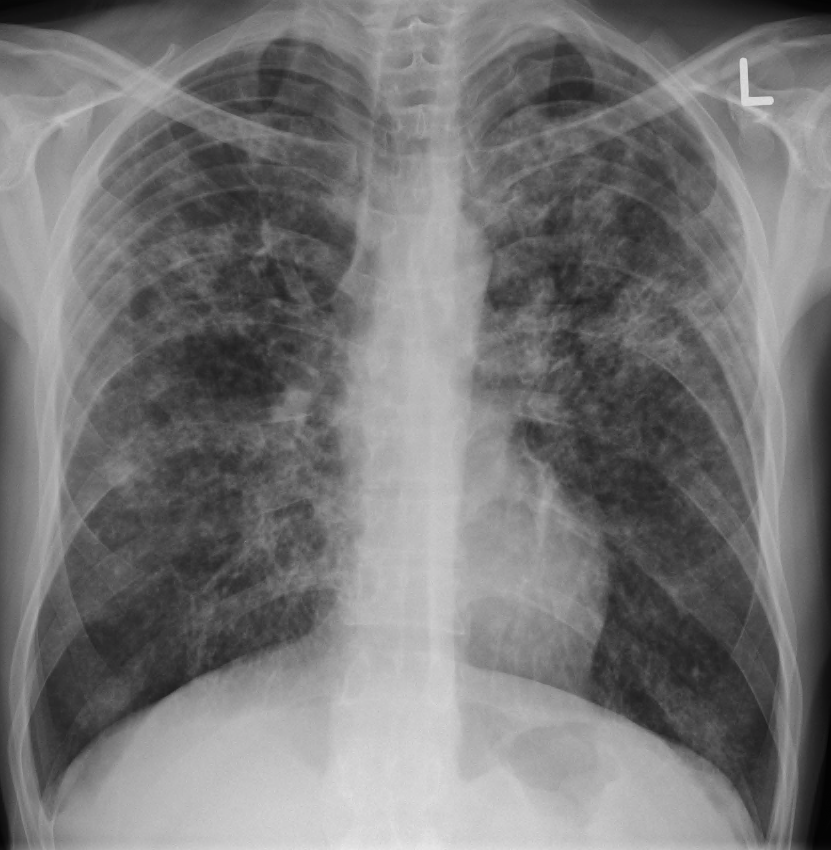What is Miliary Tuberculosis (TB)?
Miliary tuberculosis (TB) stands as a severe manifestation of TB wherein the bacteria disseminate throughout the body via the bloodstream, forming tiny tubercles in various organs. This dissemination can lead to widespread systemic involvement, challenging both diagnosis and treatment.
How to Read X-ray Findings in Miliary TB

Reading X-ray findings plays a crucial role in diagnosing miliary TB. Characterized by numerous small nodules scattered across the lungs, reminiscent of millet seeds, the X-rays often exhibit signs of extrapulmonary involvement in organs like the liver, spleen, and bones. These findings necessitate careful interpretation to guide accurate diagnosis and subsequent management.
Diagnosis
Diagnosing miliary TB involves a multifaceted approach, combining clinical assessment, imaging studies, and microbiological tests. Imaging modalities, including chest X-rays or CT scans, help unveil characteristic patterns of miliary infiltration. Microbiological confirmation via sputum analysis, blood cultures, or tissue biopsy remains pivotal for definitive diagnosis. Additionally, evaluating risk factors aids in identifying individuals prone to developing miliary TB.
Risk Factors
Military Deployments: Military personnel deployed to regions with high TB prevalence face increased risk due to close contact with local populations and potential exposure to the bacteria.
Immunosuppression: Immunocompromised individuals, including those with HIV/AIDS or undergoing immunosuppressive therapy, are more susceptible to miliary TB due to weakened immune responses.
Close Contact: Proximity to individuals with active TB, particularly in confined or overcrowded settings, heightens the risk of TB transmission and subsequent development of miliary TB.
Symptoms
Symptoms of miliary TB encompass a broad spectrum, ranging from fever, night sweats, and weight loss to fatigue, cough, and difficulty breathing. These manifestations can vary depending on the organs involved, presenting diagnostic challenges, especially in the absence of pulmonary symptoms.
Treatment
Treating miliary TB involves a multidrug regimen comprising antibiotics such as isoniazid, rifampin, pyrazinamide, and ethambutol. Tailoring treatment duration and intensity to factors like disease severity and drug susceptibility is paramount. Close monitoring and adherence to treatment protocols are imperative to achieve favorable outcomes and mitigate the risk of relapse or drug resistance.
Complications
Disseminated Disease: Miliary TB can trigger widespread dissemination, leading to multi-organ involvement and systemic complications such as meningitis, hepatic dysfunction, renal failure, and skeletal abnormalities.
Immune Reconstitution Inflammatory Syndrome (IRIS): In individuals with HIV/AIDS initiating antiretroviral therapy, IRIS may ensue as the immune system strengthens, causing a paradoxical worsening of TB symptoms and inflammatory responses.
Residual Lung Damage: Post-treatment, residual lung damage may manifest as fibrosis, bronchiectasis, or calcification, potentially impairing lung function and precipitating long-term respiratory issues.
In summary, miliary TB presents formidable diagnostic and therapeutic challenges due to its systemic nature. Timely recognition, prompt treatment initiation, and vigilant monitoring are pivotal in optimizing outcomes and mitigating complications in affected individuals.
Readings & References:


Pingback: Home - Common health conditions - ECG Oxford